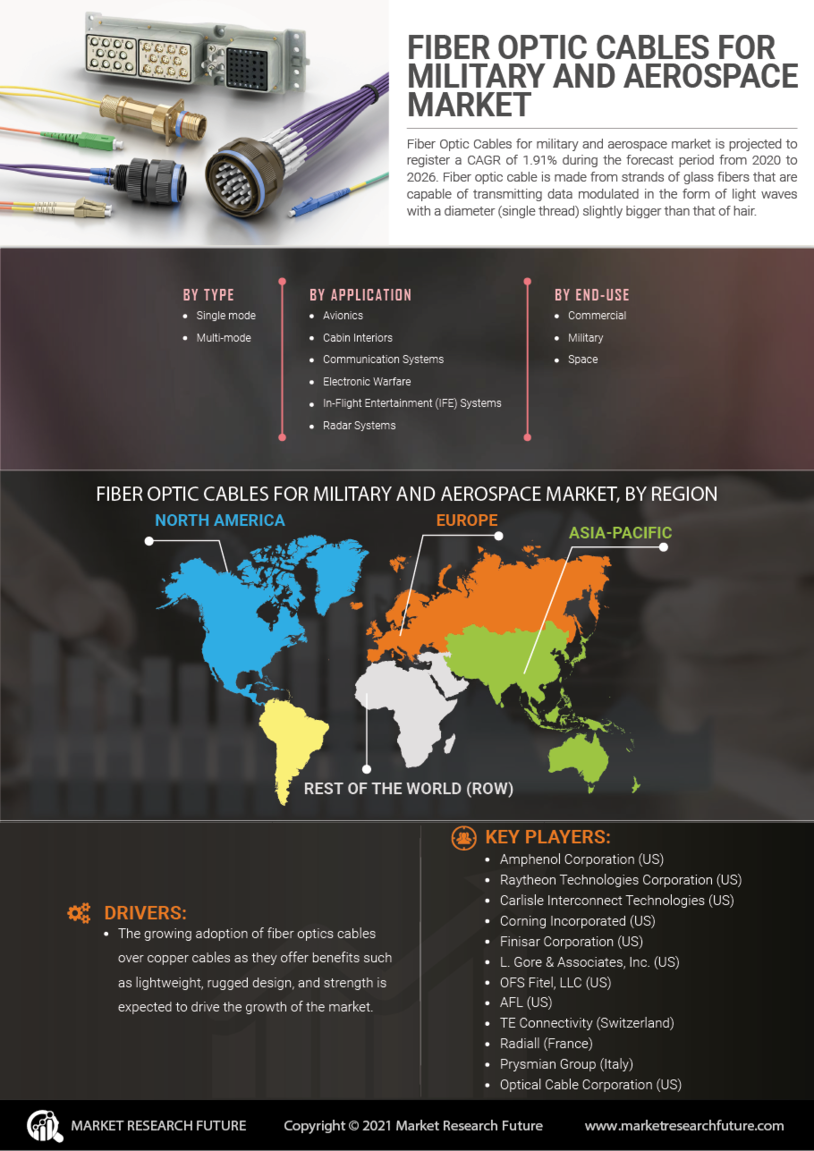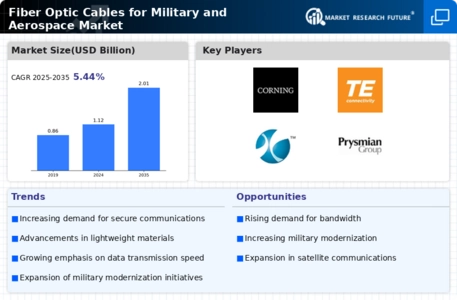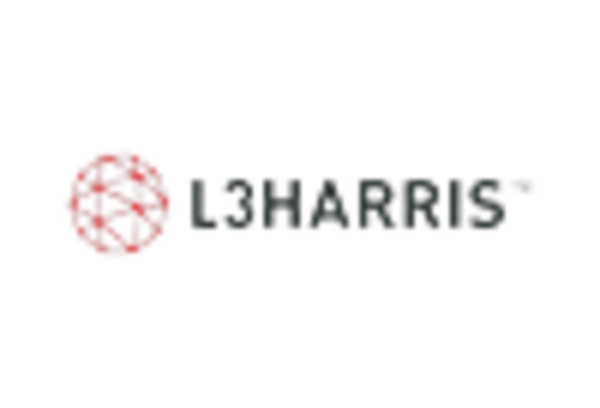The Fiber Optic Cable For Military Aerospace Market is characterized by a dynamic competitive landscape, driven by the increasing demand for advanced communication systems and the need for enhanced data transmission capabilities in military applications. Key players such as General Dynamics (US), Northrop Grumman (US), and Raytheon Technologies (US) are at the forefront, each adopting distinct strategies to solidify their market positions. General Dynamics (US) emphasizes innovation in fiber optic technology, focusing on developing high-performance cables that meet stringent military standards. Meanwhile, Northrop Grumman (US) is actively pursuing partnerships with defense agencies to integrate fiber optics into next-generation military platforms, thereby enhancing operational efficiency. Raytheon Technologies (US) appears to be concentrating on mergers and acquisitions to bolster its technological capabilities, which collectively shapes a competitive environment that is increasingly reliant on advanced technological solutions.
In terms of business tactics, companies are localizing manufacturing to reduce lead times and optimize supply chains, which is crucial in the military sector where rapid deployment is often necessary. The market structure is moderately fragmented, with several key players exerting influence over various segments. This fragmentation allows for a diverse range of offerings, yet the collective strength of these companies fosters a competitive atmosphere that encourages continuous innovation and improvement.
In November 2025, L3Harris Technologies (US) announced a strategic partnership with a leading aerospace manufacturer to develop next-generation fiber optic systems tailored for unmanned aerial vehicles (UAVs). This collaboration is significant as it not only enhances L3Harris's product portfolio but also positions the company to capitalize on the growing UAV market, which is increasingly reliant on robust communication systems. The integration of advanced fiber optics into UAVs could potentially improve data transmission rates and operational reliability.
In October 2025, Leonardo (IT) unveiled a new line of military-grade fiber optic cables designed to withstand extreme environmental conditions. This launch is indicative of Leonardo's commitment to innovation and its strategic focus on meeting the evolving needs of military clients. By offering products that can endure harsh conditions, Leonardo is likely to enhance its competitive edge in the market, appealing to defense contractors seeking reliable solutions for challenging operational environments.
In September 2025, Thales Group (FR) expanded its fiber optic cable manufacturing capabilities in Europe, aiming to increase production capacity by 30%. This expansion reflects Thales's strategy to meet the rising demand for high-performance communication systems in military applications. By enhancing its manufacturing capabilities, Thales is positioning itself to better serve its clients and respond to the growing need for advanced fiber optic solutions.
As of December 2025, current trends in the Fiber Optic Cable For Military Aerospace Market include a strong emphasis on digitalization, sustainability, and the integration of artificial intelligence (AI) into communication systems. Strategic alliances are increasingly shaping the competitive landscape, as companies recognize the value of collaboration in driving innovation. Looking ahead, competitive differentiation is likely to evolve from traditional price-based competition to a focus on technological advancements, supply chain reliability, and the ability to deliver customized solutions that meet the specific needs of military clients.

















Leave a Comment